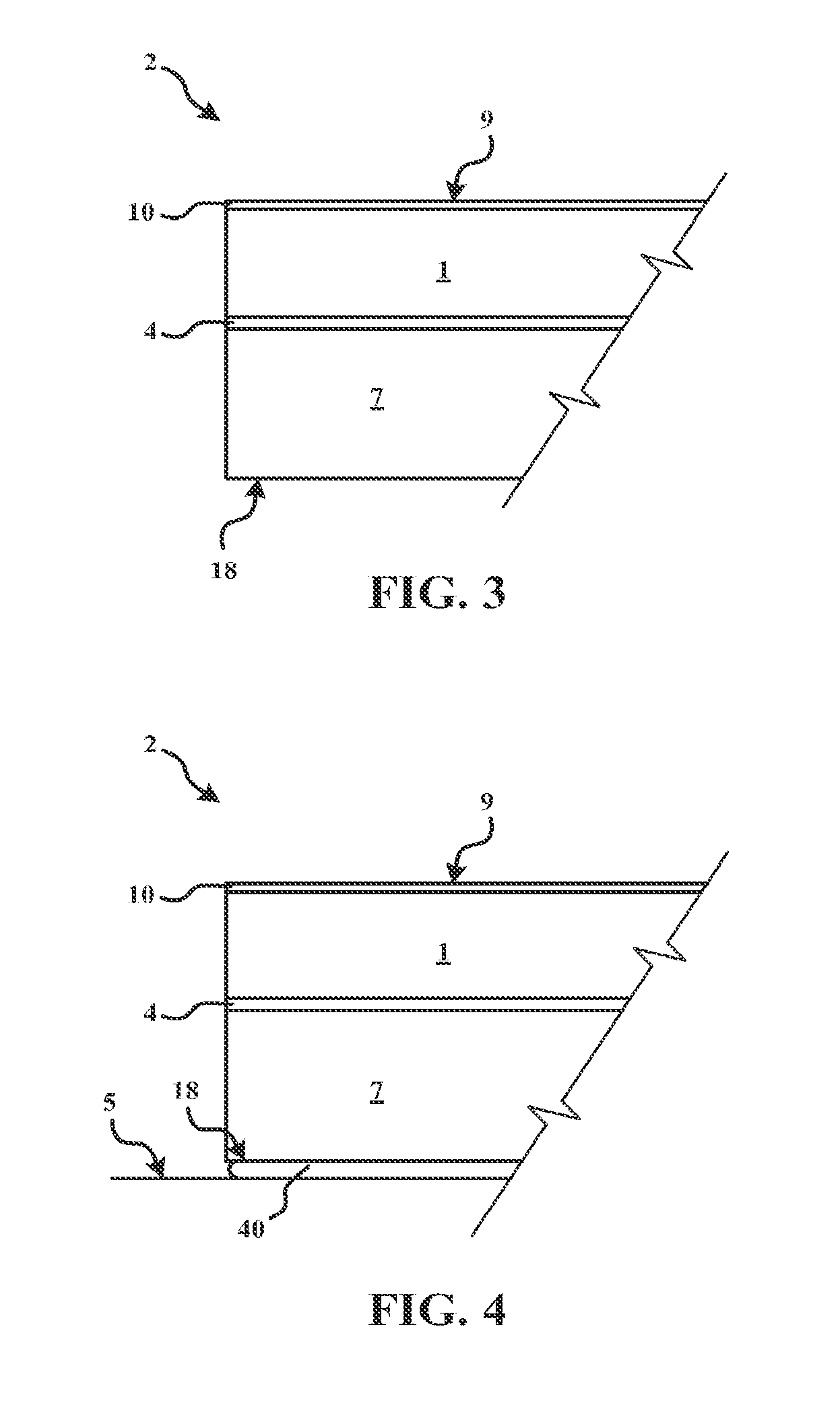Multilayer modified bituminous roofing product
- Summary
- Abstract
- Description
- Claims
- Application Information
AI Technical Summary
Benefits of technology
Problems solved by technology
Method used
Image
Examples
Embodiment Construction
[0036]In example embodiments of the present invention, the modified bitumen roofing member is a membrane having a dual-compound multi-protective-layer composition constructed of a first APP-modified asphaltic layer on the front side of a carrier sheet and a second, non-self-adhesive, SBS-modified asphaltic layer on the back side of the carrier sheet. The first asphaltic layer provides the advantageous qualities of APP-based roofing, e.g., surface traction and weathering resistance, including a high level of resistance from thermal and UV degradation, while the second asphaltic layer provides the advantageous qualities of SBS-based roofing materials, e.g., substantial elasticity, cold-weather flexibility, cushioning, and ease and adaptability of installation.
[0037]Referring now to the drawings, FIG. 1 represents a bituminous membrane constructed in accordance with the present invention and is shown in an exploded view. The composite sheet 2 is made with modified asphalt coatings and ...
PUM
| Property | Measurement | Unit |
|---|---|---|
| Temperature | aaaaa | aaaaa |
| Temperature | aaaaa | aaaaa |
| Temperature | aaaaa | aaaaa |
Abstract
Description
Claims
Application Information
 Login to View More
Login to View More - R&D
- Intellectual Property
- Life Sciences
- Materials
- Tech Scout
- Unparalleled Data Quality
- Higher Quality Content
- 60% Fewer Hallucinations
Browse by: Latest US Patents, China's latest patents, Technical Efficacy Thesaurus, Application Domain, Technology Topic, Popular Technical Reports.
© 2025 PatSnap. All rights reserved.Legal|Privacy policy|Modern Slavery Act Transparency Statement|Sitemap|About US| Contact US: help@patsnap.com



